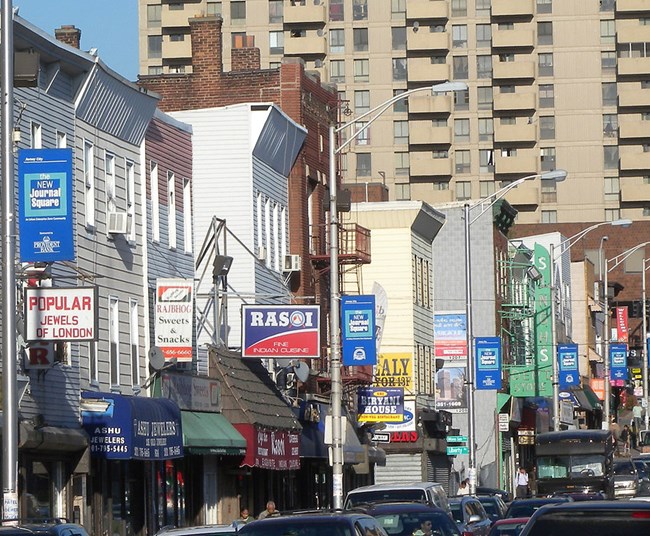Part of a series of articles titled Finding a Path Forward: Asian American Pacific Islander National Historic Landmarks Theme Study.
Article
Essay 16: New Asian American Communities: Building and Dismantling

Photo by Jim Henderson (Public domain; https://commons.wikimedia.org/wiki/File:India_Square_JC_jeh.JPG).
Growth and diversity characterize the development of new Asian American and Pacific Islander (AAPI) communities in the late 20th and early 21st centuries. Legacies of wars fought in Asia, the passage of more equitable US immigration legislation in 1965, and post-1975 Southeast Asian refugee resettlement in the United States ushered in new waves of immigration and the exponential growth of the AAPI community. The phenomena of interracial and interethnic marriages and families have also contributed to its increasing heterogeneity. In 1960, persons of Asian ancestry in the United States numbered less than one million. In 2012, the estimated number of US residents who were Asian (identifying as either one race or in combination with one or more additional races) was 18.9 million. The increase in this population has not slowed in the 21st century. On the contrary, the growth of the Asian population between the 2000 and 2010 censuses was 46 percent, more than any other major race group.[1] Demographic profiles present one dramatic lens to view the development of new communities. Place and culture provide others.
This essay profiles the five largest Asian groups in the United States -- Chinese, Filipino, Asian Indian, Vietnamese, and Korean -- in order to highlight populations that have been most impacted by new immigration. Read more >> (.pdf 3.0MB)
[1] Elizabeth M. Hoeffel, Sonya Rastogi, Myoung Ouk Kim, and Hasan Shahid, "The Asian Population: 2010" in United States Census Bureau 2010 Census Briefs.Accessed on December 28, 2015 at https://www.census.gov/prod/cen2010/briefs/c2010br-II.pdf
The views and conclusions contained in the essays are those of the authors and should not be interpreted as representing the opinions or policies of the U.S. Government. Mention of trade names or commercial products does not constitute their endorsement by the U.S. Government.
Last updated: July 23, 2024
